by Mat Wilson
In March 2005, I went birdwatching in West Malaysia for the second time in 16 months accompanied by my dad John, with the view of filling some of the holes in our birding lists without straining ourselves too much, as my dad is 72 now and not in the best of health.
We aimed to visit five major sites, as well as attend the Raptor Watch 2005 at Tanjung Tuan, Port Dickson. We aimed to cover several major habitat environments, and the associated altitudinal variations that feature so heavily in Malaysian birding, namely paddy fields, mangroves, lowland dipterous forest and lowland peat forest and highland rainforest.
We teamed up with several other people whilst we were over and had a thoroughly enjoyable and social time and still managed to see or hear over 300 species in 17 days.
Here follows my account of the first three days…
Day 1 and Day 2 of Birdwatching in West Malaysia (3rd/4th March 2005)
Flew from Heathrow at 11.50 and landed the following day at 07.20. Went straight to the hotel and were allocated a very plush hotel room on the 9th floor of the pan Pacific hotel at the airport and made contact with Carl Clifford.
Not much sleep had as the birding out of the window revealed a lot of activity on the roof of the airport multi-storey car-park with Orioles and Shrike’s aplenty and some really good close up view of House and Fork-tailed Swifts as they flew past the window.
Up at 12.30, showered and strolled into the lobby and met Carl. We drove up the freeway to the Dengkil rest area on the E1 at Putrajaya, but found that being the middle of the day, there was not much activity as it was very hot. We retired to the shade and had the first of many cups of tea ( we were given ‘pulled tea’ with condensed milk and is incredibly sweet. We later found that Teh Kosong is weak black tea without sugar or milk and is a lot better. If you want sugar I believe it is called Teh O.).
From Dengkil we took the freeways into Putrajaya and went for a wander around the wetland centre where again as it was till quite hot, activity was muted, but there were still a few good birds about including a couple of ticks (Purple backed Starling and White-headed Munia). There was also a pelican (looked like at Eastern but was flying and I thought all the birds there were clipped – still trying to establish this birds status).
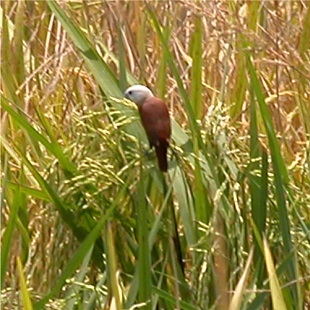
From Putrajaya were delayed getting to FRIM by an incredible amount of traffic on the freeways around Kuala Lumpur as it was well into the rush hour and it took as over 60 minutes to get to the front gate. On arrival we were told that they were shut and to come back tomorrow, but it was quite obvious that they were still open judging by the number of vehicles that were in front of us and had disappeared into the complex. We just said that we couldn’t come tomorrow and were charged the RM5 entrance fee and waved in!
I had arranged to meet Banard Lau, who I had been speaking to via the Birders Group for some time, and he had agreed to meet us at FRIM, and accompany us to the Pasoh Forest reserve later in the month.
10 Tips on How to Care for Your Pet Bird
Ten tips from the experts on how to give your pet bird the proper care it needs to thrive and be healthy.Share this!See also Breeding Cape Vultures
Habitats For Birds
As you learn to enjoy the beauty of birdlife around your home, you may wish to improve the “habitat” in your yard so that more birds will visit your property. It doesn’t matter where you live – in an apartment, townhouse or single family dwelling, in the city, suburbs or country. Just stand still and…Read More
50 Common Birds of North America
50 common birds of NA with images. Great for getting started or learning. Share this!See also Bird Photographer of The Year – Shortlist
50 Recipes for Bird Treats
Recipes For The Birds gives you 50 easy to make bird treat recipes. Everything from bird cookies to bird salad, birdie breakfast to bird pizza, you can create a cuisine that the birds will just love! Recipes For The Birds will make the birds start flocking to your own 5 star restaurant for the birds in your backyard.…Read More
750 Bird Checklist of North America
700 pages of N. American birds and identifying tips. Share this!See also Breeding Cape Vultures
We arrived at the main pond after flapping about for 15 minutes trying to find it, (during which time we found a pair of red and Black Broadbills on a smaller chain of ponds beside the road), to find Banard sitting beside the pond staring intently into some trees on the far side of the pool. He managed to point the Masked Finfoot out to us as she was preparing for bed (she roosts in the trees on the far side of the pond).
We spend a very pleasant 45 minutes standing beside the pond, which revealed Cinnamon Bittern, Striated Heron, Blue-eared, Stork-billed and White Throated KF’s, Crested Serpent Eagle, Blue-tailed and Blue-throated Bee-Eaters, Black & Red Broadbills, several calling barbets (not seen) and a multitude of other common birds.
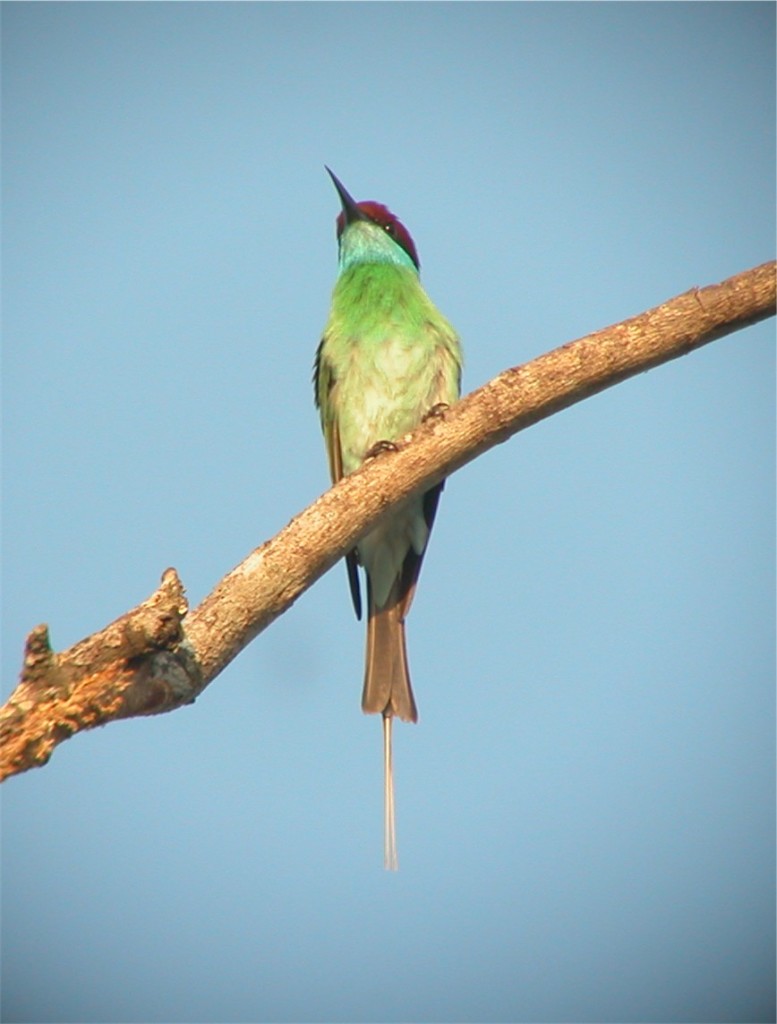
After it had become dark, we walked along the road away from the pond and had good views of a Flying Lemur and Large-tailed Nightjar.
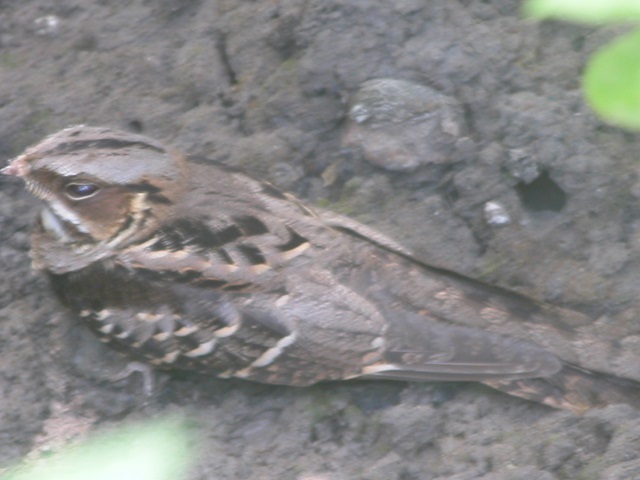
Drove back to the airport hotel and crashed out after supper.
Day 3 of Birdwatching in West Malaysia (5th March).
Setting a trend for the rest of the holiday, we were up early and breakfasted, picking up Carl in the hotel lobby, we headed for Tanjung Tuan and the Raptor watch in the ground of the Ilham Resort hotel where we were to spend the night.
We weren’t in too much hurry so were able to stop several times on route as we felt like it. We pulled in at a kampong (name not noted) on highway below the plateau that has the F1 circuit at Sepang on it and walked about and picked up the only Black-winged Flycatcher-Shrike, numerous Pink-necked Pigeons, and Orioles and good look a male Koel which was calling non-stop.
From here we stopped in the numerous oil palm plantations that surround the road all the way to Port Dickson. We managed to see several Black Baza’s and a lot of Black-shouldered kites, which by far the most numerous raptor around the plantations. We saw lots of other raptors but were unable to ID them.
At Tanjung Tuan we dropped Carl off at his hotel and proceeded to our hotel only to find that they didn’t have our reservation, or so they thought. A few sheets of paper waved under their noses (my reservation confirmation) eventually worked and we had our room (but not until 14.30 after it had been cleaned). We parked the car in the basement car park, and almost immediately found a Coppersmith’s Barbet in trees next to the hotel.
We strolled down to the area by the beach where the MNS had set up the tented village for the raptor watch and mingled with the crowds meeting several people from Yahoo birders group, I had e-mailed prior to coming on the holiday. It was a very social afternoon, which made up for the complete absence of birds.
The day was very warm and there was a strong North-easterly wind blowing which everyone agreed was keeping the birds on the far side of the Straits. I wandered into the woods behind the beach and manage to find Crimson and Purple-throated Sunbird’s but very little else.
At about 4pm clouds started to build and come inland from the Straits and with them came the birds. There were several large waves of Oriental honey Buzzards and in two hours some 300 passed overhead as well as huge flocks of Fork-tailed Swifts.
We had a walk up the road to the lighthouse in the evening but left it a bit late and it was dark before we had got too far and without seeing anything of significance.
During the day there had been several appearances of a pair of a pair of Black-thighed Falconets on the roof of the hotel, a bird which I had really hoped to see and it was nice to get it out of the way early. We had numerous good looks at it through the scope and it very obligingly sat on the lightening conductor for up to 5 minutes at a time.
The next day… continue reading Birding in Malaysia here.
About by Mat Wilson, who is a member of the Birding Planet Facebook group: I started bird watching in Canada in 1977, when my dad, who was a pilot in the RAF, was posted out to CFB Trenton in Ontario, as an exchange posting with the Canadian Air Force. I was fascinated by all the different species that were around and bought my first bird book when we moved out there for 3 years.
I have subsequently birded in Canada , USA, Malaysia , Bali, Thailand, Australia, New Zealand, Cook Islands, Spain, Greece, and of course the UK and Ireland. I suffer from several illnesses which restrict my travel now, so I’m confined to what are deemed to be safe countries (that is, not tropical), as my immune system is compromised.
Still I’ve managed to see over 350 species in the UK since I re-started birding in the UK. My favourite birding location in the world, has to be Fraser’s Hill in Malaysia.
All the photos above are taken by the author.
Would you like to have your birding story published? Contact Birding Planet here.

By the end of our birdwatching in West Malaysia my complete bird list looked like this:
| 1 | Grey Heron (Ardea cinerea) |
| 2 | Purple Heron (Ardea purpurea) |
| 3 | Striated Heron (Butorides striatus) [Little Heron] |
| 4 | Chinese Pond-Heron (Ardeola bacchus) |
| 5 | Cattle Egret (Bubulcus ibis) |
| 6 | Plumed Egret (Egretta intermedia) [Intermediate Egret] |
| 7 | Little Egret (Egretta garzetta) |
| 8 | Great Egret (Casmerodius albus) |
| 9 | Yellow Bittern (Ixobrychus eurhythmus) |
| 10 | Schrenck’s Bittern (Ixobrychus eurhythmus) |
| 11 | Cinnamon Bittern (Ixobrychus cinnamomeus) |
| 12 | Black Bittern (Dupetor flavicollis) |
| 13 | Painted Stork (Mycteria leuchocephela) |
| 14 | Lesser Adjutant (Leptoptilos javanicus) |
| 15 | Black Baza (Aviceda leuphotes) |
| 16 | Crested Honey-buzzard (Pernis ptilorhyncus) |
| 17 | Black-shouldered Kite (Elanus caeruleus) |
| 18 | Black Kite (Milvus migrans) |
| 19 | Brahminy Kite (Haliastur indus) |
| 20 | White-bellied Sea-Eagle (Haliaeetus leucogaster) |
| 21 | Crested Serpent-Eagle (Spilornis cheela) |
| 22 | Eastern Marsh Harrier (Circus spilonotus) |
| 23 | Northern (Hen) Harrier (Circus cyaneus) |
| 24 | Japanese Sparrowhawk (Accipiter gularis) |
| 25 | Black Eagle (Ictinaetus malayensis) |
| 26 | Steppe Eagle (Aquila nipalensis) |
| 27 | Booted Eagle (Hieraaetus pennatus) |
| 28 | Changeable Hawk-Eagle (Spizaetus cirrhatus) |
| 29 | Blyth’s Hawk-Eagle (Spizaetus alboniger) |
| 30 | Wallace’s Hawk-Eagle (Spizaetus nanus) |
| 31 | Peregrine Falcon (Falco peregrinus) |
| 32 | Ferruginous Wood-Partridge (Caloperdix oculea) |
| 33 | Red Junglefowl (Gallus gallus) |
| 34 | White-breasted Waterhen (Amaurornis phoenicurus) |
| 35 | Common Moorhen (Gallinula chloropus) |
| 36 | Purple Swamphen (Porphyrio porphyrio) |
| 37 | Masked Finfoot (Heliopais personata) |
| 38 | Red-wattled Lapwing (Vanellus indicus) |
| 39 | Grey Plover (Pluvialis squatarola) |
| 40 | Pacific Golden Plover (Pluvialis fulva) |
| 41 | Whimbrel (Numenius arquata) |
| 42 | Common Redshank (Tringa totanus) |
| 43 | Common Greenshank (Tringa nebularia) |
| 44 | Nordmann’s Greenshank (Tringa guttifer) |
| 45 | Wood Sandpiper (Tringa glareola) |
| 46 | Common Sandpiper (Tringa hypoleucos) |
| 47 | Pintailed Snipe (Gallinago stenura) |
| 48 | Swinhoe’s Snipe (Gallinago megala) |
| 49 | Oriental Pratincole (Glareola maldivarun) |
| 50 | White-winged Tern (Chlidonias leucopterus) |
| 51 | Gull-billed Tern (Gelochelidon nilotica) |
| 52 | Little Tern (Sterna albifrons) |
| 53 | Lesser Crested Tern (Sterna bengalensis) |
| 54 | Yellow-vented (Green) Pigeon (Treron seimundi) |
| 55 | Pink-necked (Green) Pigeon (Treron vernans) |
| 56 | Jambu Fruit-Dove (Ptilinopus jambu) |
| 57 | Green Imperial Pigeon (Ducula aenea) |
| 58 | Mountain Imperial Pigeon (Ducula badia) |
| 59 | Rock Pigeon (Columba livia) |
| 60 | Little Cuckoo-Dove (Macropygia ruficeps) |
| 61 | Spotted Dove (Streptopelia chinensis) |
| 62 | Peaceful Dove (Geopelia striata) |
| 63 | Emerald Dove (Chalcophaps indica) |
| 64 | Long-tailed Parakeet (Psittacula longicauda) |
| 65 | Blue-rumped Parrot (Psittinus cyanurus) |
| 66 | Blue-crowned Hanging-parrot (Loriculus galgulus) |
| 67 | Large Hawk-Cuckoo (Cuculus sparveriodes) |
| 68 | Indian Cuckoo (Cuculus micropterus) |
| 69 | Oriental Cuckoo (Cuculus saturatus) VO |
| 70 | Banded Bay Cuckoo (Cacomantis sonneratii) |
| 71 | Plaintive Cuckoo (Cacomantis merulinus) VO |
| 72 | Rusty-breasted Cuckoo (Cacomantis sepulcralis) |
| 73 | Malayan (Little) Bronzed Cuckoo (Chrysococcyx minutillus) |
| 74 | Drongo Cuckoo (Surniculus lugubris) |
| 75 | Asian Koel (Eudynamys scolopacea) |
| 76 | Black-bellied Malkoha (Phaenicophaeus diardii) |
| 77 | Chestnut-bellied Malkoha (Phaenicophaeus sumatranus) |
| 78 | Green-billed Malkoha (Phaenicophaeus tristis) |
| 79 | Raffles’ Malkoha (Phaenicophaeus chlorophaeus) |
| 80 | Red-billed Malkoha (Phaenicophaeus javanicus) |
| 81 | Chestnut-breasted Malkoha (Phaenicophaeus curviostris) |
| 82 | Short-toed Coucal (Centropus rectunguis) |
| 83 | Greater Coucal (Centropus sinensis) |
| 84 | Lesser Coucal (Centropus bengalensis) |
| 85 | Barn Owl (Tyto alba) |
| 86 | Barred Eagle-Owl (Bubo sumatranus) |
| 87 | Collared Owlet (Glaucidium brodiei) |
| 88 | Malaysian Eared-Nightjar (Eurostopodus temminckii) |
| 89 | Grey Nightjar (Caprimulgus indicus) |
| 90 | Large-tailed Nightjar (Caprimulgus macrurus) |
| 91 | Edible-nest Swiftlet (Aerodramus fuciphaga) |
| 92 | Black-nest Swiftlet (Aerodramus maxima) |
| 93 | White-bellied Swiftlet (Collocalia esculenta) |
| 94 | Brown Needletail (Hirundapus giganteus) |
| 95 | Silver-rumped Spinetail (Rhaphidura leucopygialis) |
| 96 | Fork-tailed Swift (Apus pacificus) |
| 97 | Little Swift (Apus affinis) [House Swift] |
| 98 | Asian Palm-Swift (Cypsiurus balasiensis) |
| 99 | Grey-rumped Treeswift (Hemiprocne longipennis) |
| 100 | Whiskered Treeswift (Hemiprocne comata) |
| 101 | Red-naped Trogon (Harpactes kasumba) |
| 102 | Orange-breasted Trogon (Harpactes oreskios) |
| 103 | Red-headed Trogon (Harpactes erythrocephalus) |
| 104 | Common Kingfisher (Alcedo atthis) |
| 105 | Blue-eared Kingfisher (Alcedo meninting) |
| 106 | Black-backed Kingfisher (Ceyx erithacus) |
| 107 | Rufous-backed Kingfisher (Ceyx rufidorsa) |
| 108 | Banded Kingfisher (Lacedo pulchella) |
| 109 | Stork-billed Kingfisher (Halcyon capensis) |
| 110 | White-throated Kingfisher (Halcyon smyrnensis) |
| 111 | Black-capped Kingfisher (Halcyon pileata) |
| 112 | Collared Kingfisher (Todirhamphus chloris) |
| 113 | Blue-tailed Bee-eater (Merops philippinus) |
| 114 | Blue-throated Bee-eater (Merops viridis) |
| 115 | Red-bearded Bee-eater (Nyctyormis amictus) |
| 116 | Dollarbird (Eurystomus orientalis) |
| 117 | Wreathed Hornbill (Rhyticeros undulatus) |
| 118 | Black Hornbill (Anthracoceros malayanus) |
| 119 | Rhinoceros Hornbill (Buceros rhinoceros) |
| 120 | Helmeted Hornbill (Rhinoplas vigil) |
| 121 | Fire-tufted Barbet (Psilopogon pyrolophus) |
| 122 | Lineated Barbet (Megalaima lineata) |
| 123 | Gold-whiskered Barbet (Megalaima chrysopogon) |
| 124 | Red-throated Barbet (Megalaima mystacophanos) |
| 125 | Golden-throated Barbet (Megalaima franinii) VO |
| 126 | Black-browed Barbet (Megalaima oorti) |
| 127 | Yellow-crowned Barbet (Megalaima henricii) |
| 128 | Blue-eared Barbet (Megalaima australis) |
| 129 | Coppersmith Barbet (Megalaima haemacephala) |
| 130 | Brown Barbet (Calorhamphus fuliginosus) |
| 131 | Speckled Piculet (Picumnus innominatus) |
| 132 | Rufous Piculet (Sasia abnormis) |
| 133 | Rufous Woodpecker (Celeus brachyurus) |
| 134 | Laced Woodpecker (Picus vittatus) |
| 135 | Greater Yellownape (Picus flavinucha) |
| 136 | Crimson-winged Woodpecker (Picus piniceus) |
| 137 | Lesser Yellownape (Picus chlorolophus) |
| 138 | Common Goldenback (Dinopium javanense) |
| 139 | Bamboo Woodpecker (Gecinulus viridis) |
| 140 | Buff-rumped Woodpecker (Meiglyptes tristis) |
| 141 | Sunda Pygmy Woodpecker (Dendrocopos moluccensis) |
| 142 | Bay Woodpecker (Blythipicus pyrrhotis) |
| 143 | Maroon Woodpecker (Blythipicus rubiginosus) |
| 144 | Greater Goldenback (Chrysocolaptes lucidus) |
| 145 | Black-and-Red Broadbill (Cymbirhynchus macroryhchus) |
| 146 | Banded Broadbill (Eurylaimus javanicus) |
| 147 | Silver-breasted Broadbill (Serilophus lunatus) |
| 148 | Long-tailed Broadbill (Psarisomus dalhousiae) |
| 149 | Barn Swallow (Hirundo rustica) |
| 150 | Pacific Swallow (Hirundo tahitica) |
| 151 | Red-rumped Swallow (Cecropis daurica) |
| 152 | Rufous-bellied Swallow (Cecropis badia) |
| 153 | Bar-winged Flycatcher-Shrike (Hemipus picatus) |
| 154 | Black-winged Flycatcher-Shrike (Hemipus hirundinaceus) |
| 155 | Large Woodshrike (Tephrodornis virgatus) |
| 156 | Malaysian Cuckoo-Shrike (Coracina macei) |
| 157 | Pied Triller (Lalage nigra) |
| 158 | Ashy Minivet (Pericrocotus divaricatus) |
| 159 | Fiery Minivet (Pericroctus igneus) |
| 160 | Grey-chinned Minivet (Pericrocotus solaris) |
| 161 | Scarlet Minivet (Pericrocotus flammeus) |
| 162 | Common Iora (Aegithina tiphia) |
| 163 | Great Iora (Aegithina lafresnayei) |
| 164 | Greater Green Leafbird (Chloropsis sonnerati) |
| 165 | Blue-winged Leafbird (Chloropsis cochinchinensis) |
| 166 | Orange-bellied Leafbird (Chloropsis hardwickii) |
| 167 | Straw-headed Bulbul (Pycnonotus zeylandicus) |
| 168 | Black-headed Bulbul (Pycnonotus atriceps) |
| 169 | Black-crested Bulbul (Pycnonotus melanicterus) |
| 170 | Scaly-breasted Bulbul (Pycnonotus squamatus) |
| 171 | Grey-bellied Bulbul (Pycnonotus cyaniventris) |
| 172 | Stripe-throated Bulbul (Pycnonotus finlaysoni) |
| 173 | Yellow-vented Bulbul (Pycnonotus goiavier) |
| 174 | Olive-winged Bulbul (Pycnonotus plumosus) |
| 175 | Cream-vented Bulbul (Pycnonotus simplex) |
| 176 | Red-eyed Bulbul (Pycnonotus brunneus) |
| 177 | Spectacled Bulbul (Pycnonotus erythrophthalmos) |
| 178 | Finsch’s Bulbul (Criniger finschii) |
| 179 | Ochraceous (Olivaceous) Bulbul (Alophoixus ochraceus) |
| 180 | Yellow-bellied Bulbul (Alophoixus phaeocephalus) |
| 181 | Hairy-backed Bulbul (Hypsipetes criniger) |
| 182 | Buff-vented Bulbul (Hypsipetes charlottae) |
| 183 | Mountain Bulbul (Hypsipetes mcclellandii) |
| 184 | Streaked Bulbul (Hypsipetes malaccensis) |
| 185 | Ashy Bulbul (Hypsipetes flavala) |
| 186 | Black Drongo (Dicrurus macrocercus) |
| 187 | Ashy Drongo (Dicrurus leucophaeus ssp. nigriescens) |
| 188 | Crow-billed Drongo (Dicrurus annectans) |
| 189 | Bronzed Drongo (Dicrurus aeneus) |
| 190 | Lesser Racquet-tailed Drongo (Dicrurus remifer) |
| 191 | Greater Racquet-tailed Drongo (Dicrurus paradiseus) |
| 192 | Dark-throated Oriole (Oriolus xanthonotus) |
| 193 | Black-naped Oriole (Oriolus chinensis) |
| 194 | Black-and-crimson Oriole (Oriolus cruentus) |
| 195 | Asian Fairy-bluebird (Irena puella) |
| 196 | Green Magpie (Cissa chinensis) |
| 197 | House Crow (Corvus splendens) |
| 198 | Large-billed Crow (Corvus macrorhynchos) |
| 199 | Great Tit (Parus major) |
| 200 | Sultan Tit (Melanochlora sultanea) |
| 201 | Blue Nuthatch (Sitta azurea) |
| 202 | Buff-breasted Babbler (Trichastoma tickelli) |
| 203 | Horsfield’s Babbler (Malacocincla sepiarium) |
| 204 | Abbott’s Babbler (Trichastoma abbotti) |
| 205 | Marbled Wren-Babbler (Napothera marmorata) |
| 206 | Golden Babbler (Stachyris chrysaea) |
| 207 | Grey-throated Babbler (Stachyris nigriceps) |
| 208 | Grey-headed Babbler (Stachyris poliocephala) |
| 209 | Striped Tit-Babbler (Macronous gularis) |
| 210 | Black Laughingthrush (Garrulax lugubris) |
| 211 | Chestnut-capped Laughingthrush (Garrulax mitratus) |
| 212 | Chestnut-crowned Laughingthrush (Garrulax erythrocephalus) FH on the Telekom Loop, and Hhemmant trail. Very inconspicuous bird. |
| 213 | Silver-eared Mesia (Leiothrix argentauris) |
| 214 | White-browed Shrike-Babbler (Pteruthius flaviscapis) |
| 215 | Black-eared Shrike-Babbler (Pteruthius melanotis) |
| 216 | White-hooded Babbler (Gampsorhynchus rufulus) |
| 217 | Blue-winged Minla (Minla cyanouroptera) |
| 218 | Mountain Fulvetta (Alcippe peracensis) |
| 219 | Long-tailed Sibia (Heterophasia picaoides) |
| 220 | White-bellied Yuhina (Yuhina zantholeuca) |
| 221 | Oriental Magpie Robin (Copsychus saularis) |
| 222 | White-rumped Shama (Copsychus malabaricus) |
| 223 | White-tailed Robin (Cinclidium leucurum) |
| 224 | Slaty-backed Forktail (Enicurus schistaceus) |
| 225 | Malayan Whistling-Thrush (Myiophoneus robinsoni) |
| 226 | Golden-bellied Gerygone (Flyeater) (Gerygone sulphurea) |
| 227 | Chestnut-crowned Warbler (Seicerus castaniceps) |
| 228 | Yellow-bellied Warbler (Abroscopus superciliaris) |
| 229 | Inornate Warbler (Phylloscopus inornatus) |
| 230 | Arctic Warbler (Phylloscopus borealis) |
| 231 | Eastern-crowned Warbler (Phylloscopus coronatus) |
| 232 | Mountain Leaf-Warbler (Phylloscopus trivirgatus) |
| 233 | Oriental Reed-Warbler (Acrocephalus orientalis) |
| 234 | Lanceolated Warbler (Locustella lanceolata) |
| 235 | Common Tailorbird (Orthotomus sutorius) |
| 236 | Dark-necked Tailorbird (Orthotomus atrogularis) |
| 237 | Ashy Tailorbird (Orthotomus ruficeps) |
| 238 | Rufescent Prinia (Prinia rufescens) |
| 239 | Zitting Cisticola (Cisticola juncidis) |
| 240 | Dark-sided Flycatcher (Muscicapa sibirica) |
| 241 | Asian Brown Flycatcher (Muscicapa dauurica) |
| 242 | Verditer Flycatcher (Eumyias thalassina) |
| 243 | Yellow-rumped Flycatcher (Ficedula zanthopygia) |
| 244 | Mugimaki Flycatcher (Ficedula mugimaki) |
| 245 | Rufous-browed Flycatcher (Ficedula solitaria) |
| 246 | Little Pied Flycatcher (Ficedula westermanni) |
| 247 | Blue-and-White Flycatcher (Cyanoptila cyanomelana) |
| 248 | Large Niltava (Niltava grandis) |
| 249 | Pale Blue-Flycatcher (Cyornis unicolor) |
| 250 | Hill Blue Flycatcher (Cyornis banyumas) |
| 251 | Pygmy Blue Flycatcher (Muscicapella hodgsoni) |
| 252 | Grey-headed Flycatcher (Culicicapa ceylonensis) |
| 253 | White-throated Fantail (Rhipidura albicollis) |
| 254 | Pied Fantail (Rhipidura javanica) |
| 255 | Japanese Paradise-Flycatcher (Terpsiphone atrocaudata) |
| 256 | Asian Paradise-Flycatcher (Terpsiphone paradisi) |
| 257 | Mangrove Whistler (Pachycephela grisola) |
| 258 | Grey Wagtail (Motacilla cinerea) |
| 259 | Yellow Wagtail (Motacilla citreola) |
| 260 | Forest Wagtail (Dendronanthus indicus) |
| 261 | Paddyfield Pipit (Anthus rufulus) |
| 262 | White-breasted Woodswallow (Artamus leucorhyncus) |
| 263 | Brown Shrike (Lanius cristatus) |
| 264 | Tiger Shrike (Lanius tigrinus) |
| 265 | Long-tailed Shrike (Lanius schach) |
| 266 | Philippine Glossy Starling (Aplonis panayensis) |
| 267 | Purple-backed Starling (Sternus sterninus) |
| 268 | Common Myna (Acridotheres tristis) |
| 269 | Jungle Myna (Acridotheres fuscus) |
| 270 | Javan Myna (Acridotheres javanicus) |
| 271 | Hill Myna (Gracula religiosa) |
| 272 | Brown-throated Sunbird (Anthreptes malacensis) |
| 273 | Red-throated Sunbird (Anthreptes rhodolaema) |
| 274 | Ruby-cheeked Sunbird (Anthreptes singalensis) |
| 275 | Purple-naped Sunbird (Hypogramma hypogrammicum) |
| 276 | Purple-throated Sunbird (Nectarinia sperta) |
| 277 | Olive-backed Sunbird (Nectarinia jugularis) |
| 278 | Crimson Sunbird (Aethopyga siparaja) |
| 279 | Little Spiderhunter (Arachnothera longirostra) VO |
| 280 | Long-billed Spiderhunter (Arachnothera robusta) |
| 281 | Spectacled Spiderhunter (Arachnothera flavigaster) |
| 282 | Yellow-eared Spiderhunter (Arachnothera chrysogenys) |
| 283 | Grey-breasted Spiderhunter (Arachnothera affinis) |
| 284 | Streaked Spiderhunter (Arachnothera magna) |
| 285 | Yellow-breasted Flowerpecker (Prionochilus maculatus) |
| 286 | Crimson-breasted Flowerpecker (Prionochilus percissus) |
| 287 | Thick-billed Flowerpecker (Dicaeum agile) |
| 288 | Yellow-vented Flowerpecker (Dicaeum chrusorrheum) |
| 289 | Orange-bellied Flowerpecker (Diceaum trigonostigma) |
| 290 | Scarlet-backed Flowerpecker (Dicaeum cruentatum) |
| 291 | Buff-bellied Flowerpecker (Dicaeum ignipectus) |
| 292 | Oriental White-eye (Zosterops palpebrosa) |
| 293 | Everett’s White-eye (Zosterops everetti) |
| 294 | Eurasian Tree Sparrow (Passer montanus) |
| 295 | Baya Weaver (Ploceus philippinus) |
| 296 | White-rumped Munia (Lonchura striata) |
| 297 | Scaly-breasted Munia (Lonchura punctulata) |
| 298 | Black-headed Munia (Lonchura malacca) |
| 299 | White-headed Munia (Lonchura maja) |
| 300 | Budgerigar (Melopsittacus undulatus) (Feral) |

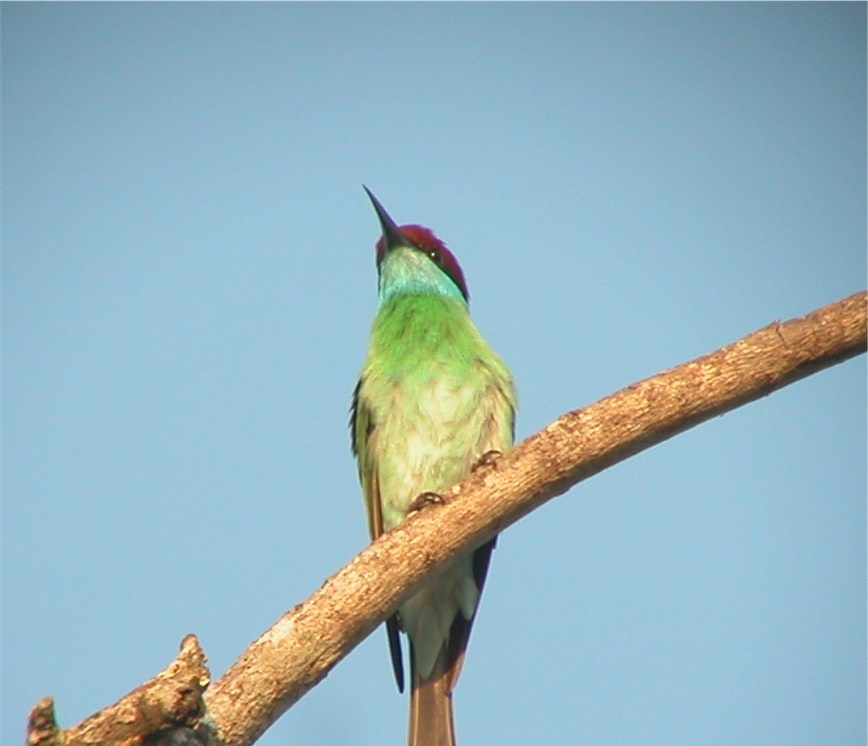
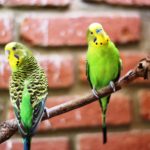
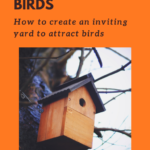
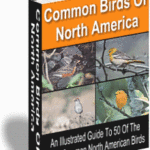
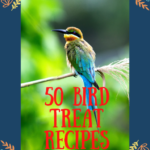
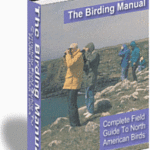
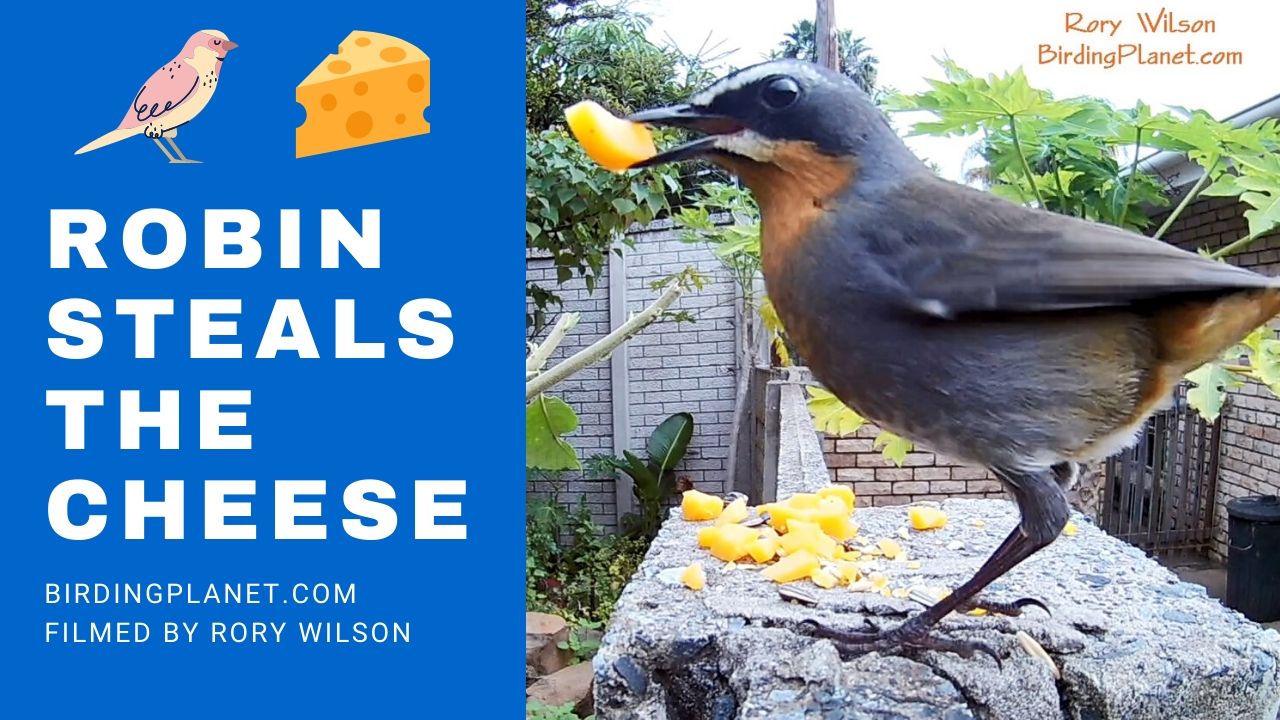

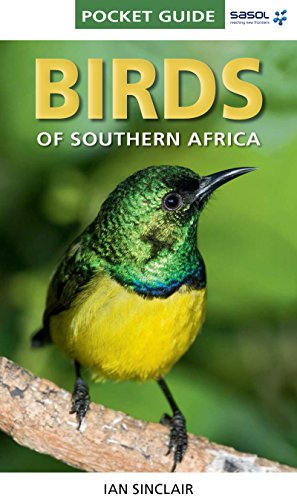


What an accomplishment! I’m so glad that you were able to go with your dad. What a special memory for both of you. Thank you for sharing your story!